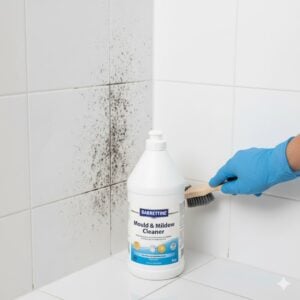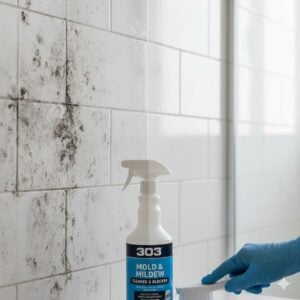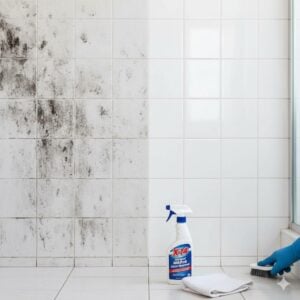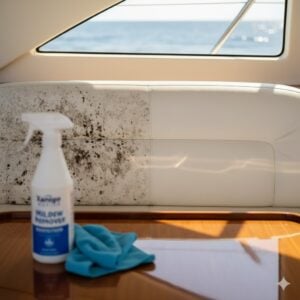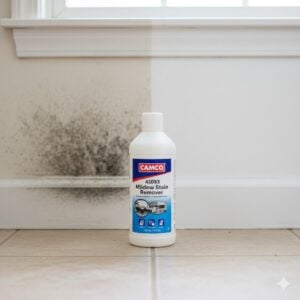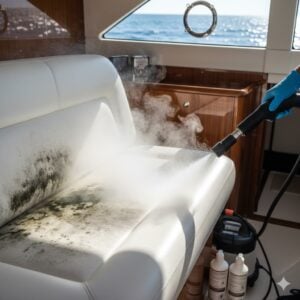Facing the daunting challenge of Mold on Clothes is not just about laundry—it’s about protecting your health and preserving your favorite outfits. Mold can be a stubborn adversary, lurking in the damp corners of our closets and drawers, but today, we’re taking a stand. With these 10 innovative tricks, we’re not just cleaning; we’re safeguarding our homes and loved ones against mold’s sneaky invasions. Stick around to learn how we can tackle this issue together, ensuring your clothes remain pristine and mold-free.
Table of Contents
ToggleTrick 1: Immediate Drying – The Power of Sunshine

let’s delve into how sunlight acts as a natural mold disinfectant for your clothing. Sunlight’s effectiveness against mold is largely due to its ultraviolet (UV) rays, which have properties that disrupt the DNA of mold spores, ultimately killing them or inhibiting their growth.
Steps for Using Sunlight to Remove Mold from Clothes:
- Shake Off Mold Spores: Before exposing your clothes to sunlight, gently shake them to remove loose mold spores.
- Timing for Sun Exposure: The UV rays are strongest between 10 AM and 3 PM. This is the optimal window for sun-drying your clothes.
- Lay Clothes Flat: Spread your clothes flat under direct sunlight. Ensure that the entire surface area gets exposed to the sun.
- Turning Over: Halfway through the drying time, flip your clothes to ensure even exposure to sunlight.
- Duration of Exposure: A minimum of 3-4 hours of direct sunlight is recommended. However, thicker fabrics may require longer.
- Consider the Fabric Type: While sunlight is beneficial for most fabrics, delicate materials or those prone to fading should be monitored closely or dried indirectly.
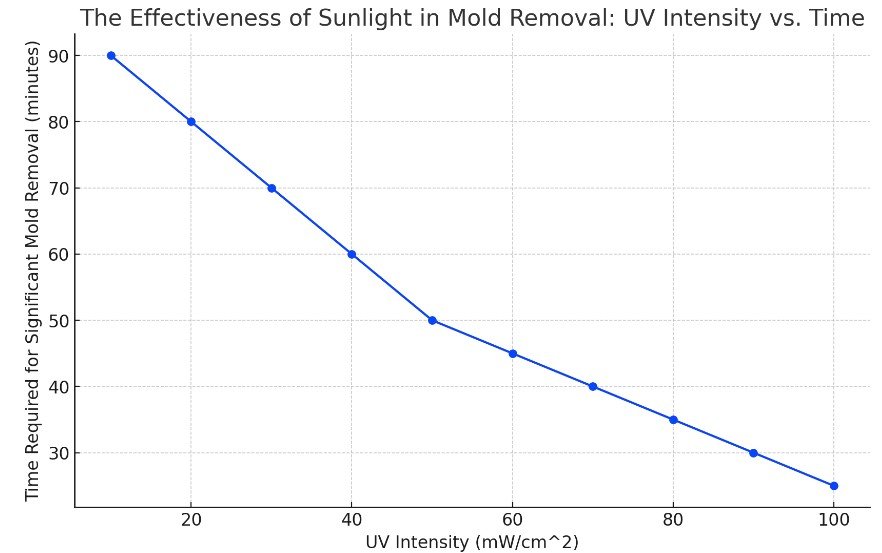
Using sunlight to combat mold on clothes is not only effective but also environmentally friendly. It’s important, however, to approach this method with an understanding of the fabric’s tolerance to sunlight and the intensity of UV exposure needed to effectively kill mold spores. Regularly practicing this trick, in conjunction with maintaining dry and well-ventilated storage areas, can significantly reduce the recurrence of mold on your clothes.
Trick 2: Vinegar – Your Mold-Fighting Ally
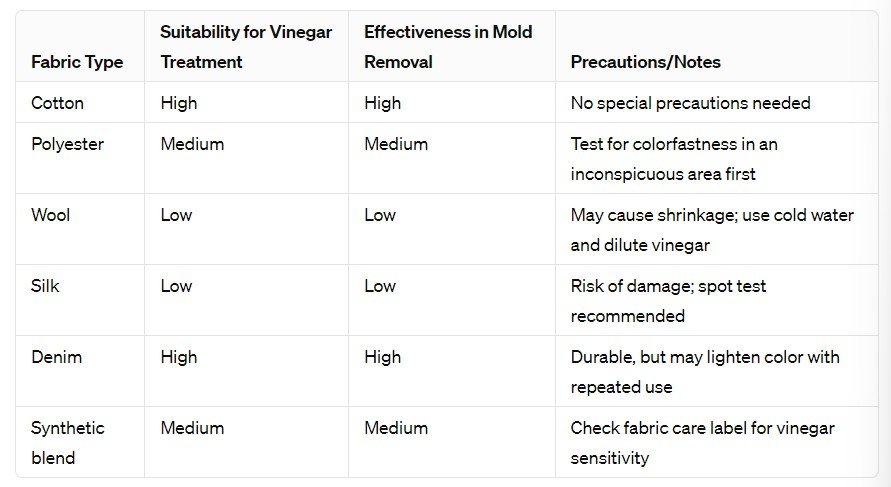
Vinegar, with its acidic nature, acts as a formidable enemy against mold on clothes. Its efficacy lies in its ability to break down the mold structure and prevent its growth without harming most fabrics. Here’s how to use vinegar to combat mold:
Steps for Using Vinegar to Remove Mold:
- Mixture Preparation: Mix one part white distilled vinegar with one part water. This diluted solution is strong enough to kill mold but gentle enough to protect your clothes.
- Application Method:
- For washable fabrics: Add the vinegar solution directly into the washing machine along with the moldy clothes. Use the hottest water setting that is safe for the fabric.
- For delicate fabrics: Soak a clean cloth in the vinegar solution and gently dab it onto the moldy areas.
- Soaking Time: For heavily mold-infested clothes, let them soak in the vinegar solution for at least one hour before washing.
- Washing: After soaking, wash the clothes as you normally would. You can add a cup of vinegar to the rinse cycle for extra mold-fighting power.
- Sun-Dry: If possible, let the clothes dry in direct sunlight to further enhance the mold-killing process.
Why Vinegar Works: Vinegar’s acidity disrupts mold’s life cycle, killing existing spores and inhibiting new growth. Its natural, non-toxic nature makes it a safe alternative to harsh chemical mold removers, suitable for most fabric types except for very delicate fibers like silk or wool, which may require a more cautious approach.
Implementing vinegar in your mold removal process is not just effective but also environmentally friendly and cost-effective. It’s a versatile solution that not only combats mold but can also freshen and disinfect your clothes.
Trick 3: Essential Oils Magic

Essential oils, particularly tea tree and lavender, offer a natural and aromatic way to combat mold on clothes. Their antimicrobial properties make them effective against mold spores without introducing harsh chemicals to your fabrics. Here’s how to harness the magic of essential oils:
Steps for Using Essential Oils to Remove Mold:
- Oil Selection: Choose high-quality, pure tea tree or lavender essential oil. These oils are known for their antifungal and antibacterial properties.
- Mixing the Solution:
- Combine 2 teaspoons of essential oil with 2 cups of water in a spray bottle. This dilution is effective yet gentle on most fabrics.
- Shake well to ensure the oil is evenly distributed throughout the water.
- Application Method:
- Lightly spray the moldy areas of the fabric with the essential oil solution. Avoid soaking the fabric to prevent oil stains.
- For delicate fabrics, test the solution on a small, inconspicuous area first to ensure it doesn’t cause any damage or discoloration.
- Let It Sit: Allow the solution to sit on the fabric for at least an hour, providing time for the essential oils to penetrate and kill the mold spores.
- Wash: Wash the treated clothes as usual, preferably in warm water to help further eliminate mold spores.
Why Essential Oils Work: The antifungal properties of tea tree and lavender oils disrupt the growth and reproduction of mold spores. Their pleasant scent also acts as a natural deodorizer, leaving clothes smelling fresh. Additionally, using essential oils is a safe, eco-friendly alternative to synthetic mold removers, making them ideal for households seeking natural cleaning solutions.
Trick 4: The Freezing Technique

The freezing technique is a novel approach to killing mold spores on clothes, leveraging extreme cold to disrupt the spores’ viability. This method is particularly useful for delicate items that cannot withstand heat or harsh cleaning agents. Here’s how to effectively use freezing to combat mold on your garments:
Steps for Using the Freezing Technique:
- Prepare Your Garment: Place the mold-infected clothing in a plastic bag. Ensure the bag is sealed properly to prevent moisture from entering, which could further exacerbate the mold problem.
- Freeze: Place the sealed bag in your freezer. The garment should be left in the freezer for at least 24 hours to ensure that the cold penetrates deeply enough to kill the mold spores.
- Thaw and Clean: Remove the garment from the freezer and allow it to thaw naturally at room temperature. Once thawed, clean the garment according to its care instructions, preferably in a sunny spot to take advantage of the additional mold-killing benefits of UV light.
Suitable Fabrics and Items:
- Delicate fabrics such as silk, wool, and leather that might be damaged by heat or vinegar treatments.
- Small items that fit easily into a freezer, such as scarves, hats, and gloves.
Why It Works: Freezing temperatures are inhospitable to mold spores, effectively killing them or rendering them inactive. This method is particularly appealing for its gentleness, making it an excellent option for preserving the integrity of delicate items while still addressing mold concerns. It’s an eco-friendly solution that avoids the use of chemicals, aligning with sustainable cleaning practices.
Trick 5: Baking Soda & Vinegar Duo

Combining baking soda and vinegar creates a potent solution for eliminating mold from clothes, thanks to the mixture’s ability to disrupt mold at the chemical level. Here’s how to harness this dynamic duo:
Recipe and Application Steps:
- Create a Paste:
- Mix 2 parts baking soda with 1 part water to form a thick paste. This paste will be applied directly to the moldy areas of the fabric.
- Apply the Paste:
- Using a brush or cloth, apply the baking soda paste generously onto the mold spots. Allow it to sit for at least 30 minutes. The baking soda will absorb the mold and help lift it from the fabric.
- Vinegar Spray:
- While the baking soda works on the mold, fill a spray bottle with white distilled vinegar. After the baking soda has set, spray the vinegar directly onto the paste-covered areas. You will notice a fizzing action as the vinegar reacts with the baking soda, helping to further break down mold.
- Scrub:
- Once the fizzing has stopped, gently scrub the area with a brush to remove the mold from the fabric.
- Wash:
- Rinse the garment in warm water, then launder as usual, according to the care instructions.
Effectiveness: The alkalinity of baking soda paired with the acidity of vinegar creates a reaction that is particularly effective at breaking down mold, making it easier to wash away. This method is safe for most fabrics and offers an eco-friendly alternative to harsh chemical mold removers.
This approach not only targets mold directly but also deodorizes your clothes, leaving them fresh and clean. It’s a simple, cost-effective solution leveraging common household items to combat mold issues.
Trick 6: Hydrogen Peroxide – The Gentle Bleach

Hydrogen peroxide serves as a gentle alternative to traditional bleach for removing mold from clothes. Its oxidizing properties make it effective at killing mold spores without the harsh effects on colors and fabrics. Here’s how to safely use hydrogen peroxide:
Recommended Concentration and Application Steps:
- Choose the Right Concentration: Use a 3% hydrogen peroxide solution, which is commonly available and safe for most fabrics.
- Test the Fabric: Before applying hydrogen peroxide to the entire garment, test a small, inconspicuous area for colorfastness. Wait for at least 5 minutes to ensure there’s no discoloration.
- Direct Application:
- For light mold infestation: Apply hydrogen peroxide directly to the moldy areas using a spray bottle. Ensure the area is thoroughly saturated.
- For severe cases: Soak the moldy garment in a basin filled with a mixture of water and hydrogen peroxide (1 part hydrogen peroxide to 6 parts water) for up to 2 hours.
- Scrub if Necessary: For stubborn mold spots, gently scrub the area with a soft-bristled brush after applying hydrogen peroxide.
- Launder as Usual: After treatment, wash the garment according to its care label instructions.
Why It Works: Hydrogen peroxide’s oxidizing action breaks down the structure of mold spores, effectively killing them. Its gentle nature makes it suitable for both white and colored fabrics, offering a safe mold removal solution that doesn’t compromise the integrity of the garment.
Using hydrogen peroxide is a safe, eco-friendly way to tackle mold, ensuring your clothes come out clean and fresh without the risk of damaging delicate fabrics or losing vibrant colors.
Trick 7: Alcohol & Water Solution

Utilizing an alcohol and water solution is an effective way to tackle mold stains on clothing. Alcohol, due to its disinfectant properties, can kill mold spores and help lift stains from the fabric. Here’s how to prepare and apply this solution for the best results:
Preparing and Applying the Solution:
- Mix the Solution:
- Combine 1 part rubbing alcohol (isopropyl alcohol) with 1 part water in a spray bottle. This dilution is strong enough to be effective against mold while minimizing any potential damage to fabrics.
- Test the Fabric:
- Before applying the solution to the moldy area, test it on an inconspicuous part of the garment to ensure it doesn’t discolor or damage the fabric.
- Application:
- Spray the alcohol and water solution directly onto the mold stains. Ensure the area is thoroughly saturated, allowing the alcohol to penetrate the fabric and reach the mold spores.
- Let It Sit:
- Allow the solution to sit on the fabric for at least 30 minutes. This dwell time gives the alcohol enough time to work on the mold spores.
- Blot and Rinse:
- After the waiting period, gently blot the area with a clean, dry cloth to remove any excess moisture and loosened mold. Rinse the area with clean water.
- Launder as Usual:
- Wash the garment according to its care label instructions, preferably in warm water to help further remove any remaining mold spores.
This method is particularly useful for non-washable fabrics and items that are difficult to clean using conventional washing methods. The alcohol and water solution provides a gentle yet effective way to remove mold stains without the need for harsh chemicals.
Trick 8: Airflow & Dehumidifiers
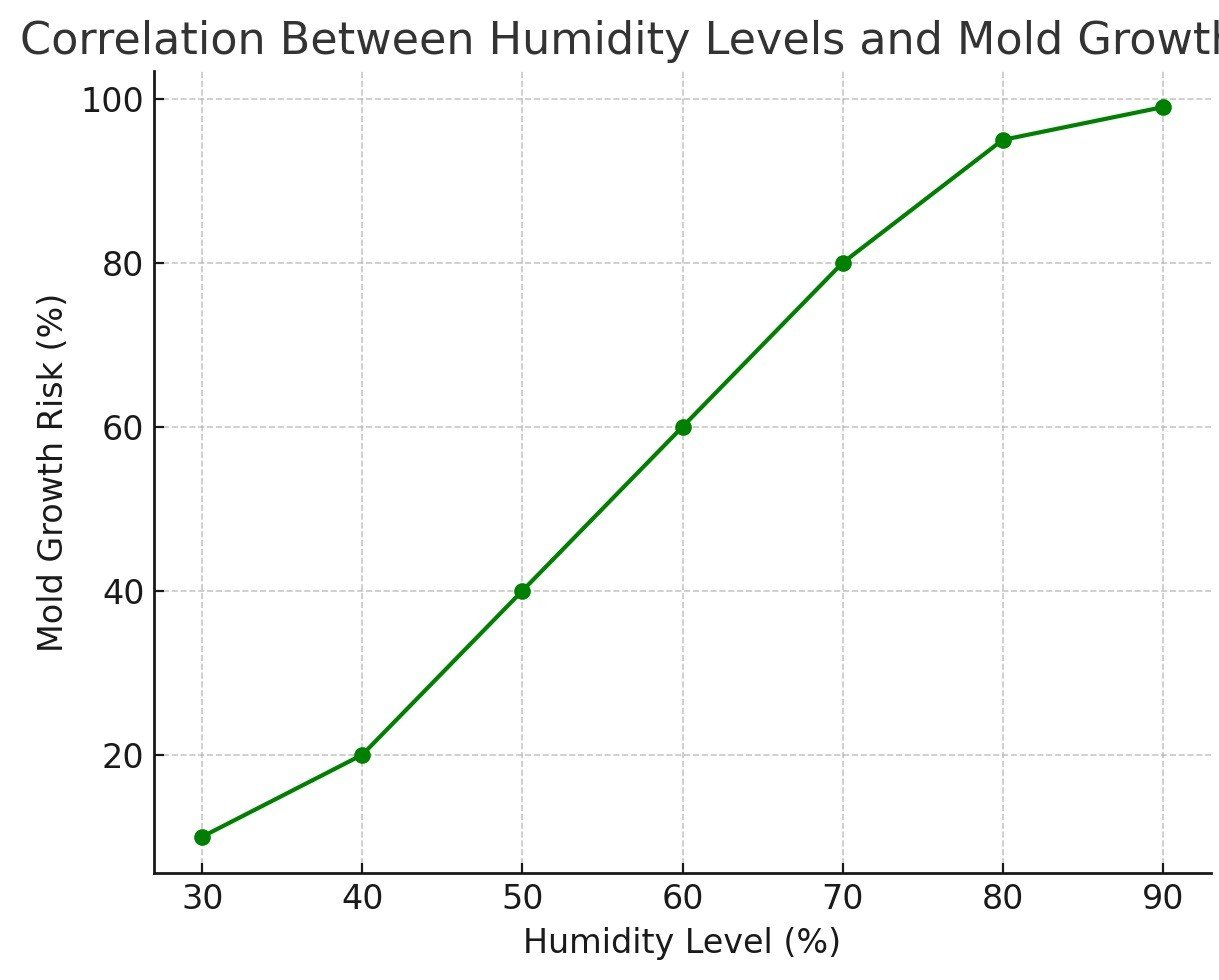
Maintaining proper airflow and using dehumidifiers play crucial roles in preventing mold growth on clothes. Mold thrives in moist, stagnant environments, so improving air circulation and reducing humidity are key strategies. Here’s how to optimize these factors in your household:
Improving Airflow and Using Dehumidifiers:
- Optimize Air Circulation:
- Ensure that closets and rooms where clothes are stored are not overcrowded, allowing air to circulate freely around garments.
- Use fans or open windows to enhance airflow in rooms prone to dampness, especially during dry, sunny days.
- Utilize Dehumidifiers:
- Place dehumidifiers in areas of your home that are particularly susceptible to high humidity levels, such as basements, laundry rooms, and bathrooms.
- For optimal results, maintain indoor humidity levels between 40% and 60%. This range inhibits mold growth without making the air too dry.
- Regular Checks and Maintenance:
- Regularly inspect and clean dehumidifiers to ensure they’re operating efficiently. Replace filters as recommended by the manufacturer.
- Monitor humidity levels with a hygrometer, a device that measures the moisture content in the air, to adjust dehumidifier settings as necessary.

By implementing these measures, you can create an environment that is less hospitable to mold, protecting your clothes and other belongings from potential damage. Remember, prevention is key—maintaining good airflow and controlling humidity levels are among the most effective strategies to prevent mold growth on clothing.
Trick 9: Regular Deep Cleaning

Regular deep cleaning is pivotal in preventing mold growth on clothes by eliminating spores and maintaining an environment that deters their proliferation. Here’s a guide to establishing an effective cleaning routine:
Effective Deep Cleaning Techniques and Schedule:
- Weekly Maintenance:
- Air out closets and drawers to reduce moisture and prevent the accumulation of mold spores. This can be as simple as leaving closet doors open for a few hours.
- Vacuum closets and storage areas to remove dust and potential mold spores. Use a vacuum with a HEPA filter to prevent spores from being released back into the air.
- Monthly Deep Cleaning:
- Wipe down all surfaces in closets and drawers with a mild, mold-inhibiting cleaner. Ensure the cleaner is safe for the surface to prevent damage.
- For leather goods and shoes, use a dedicated leather cleaner that also offers mold prevention properties.
- Seasonal Wardrobe Management:
- At the change of seasons, thoroughly clean all clothes before storing them. This includes washing or dry-cleaning items as appropriate.
- Use breathable garment bags or storage containers to protect clothes during off-season storage.
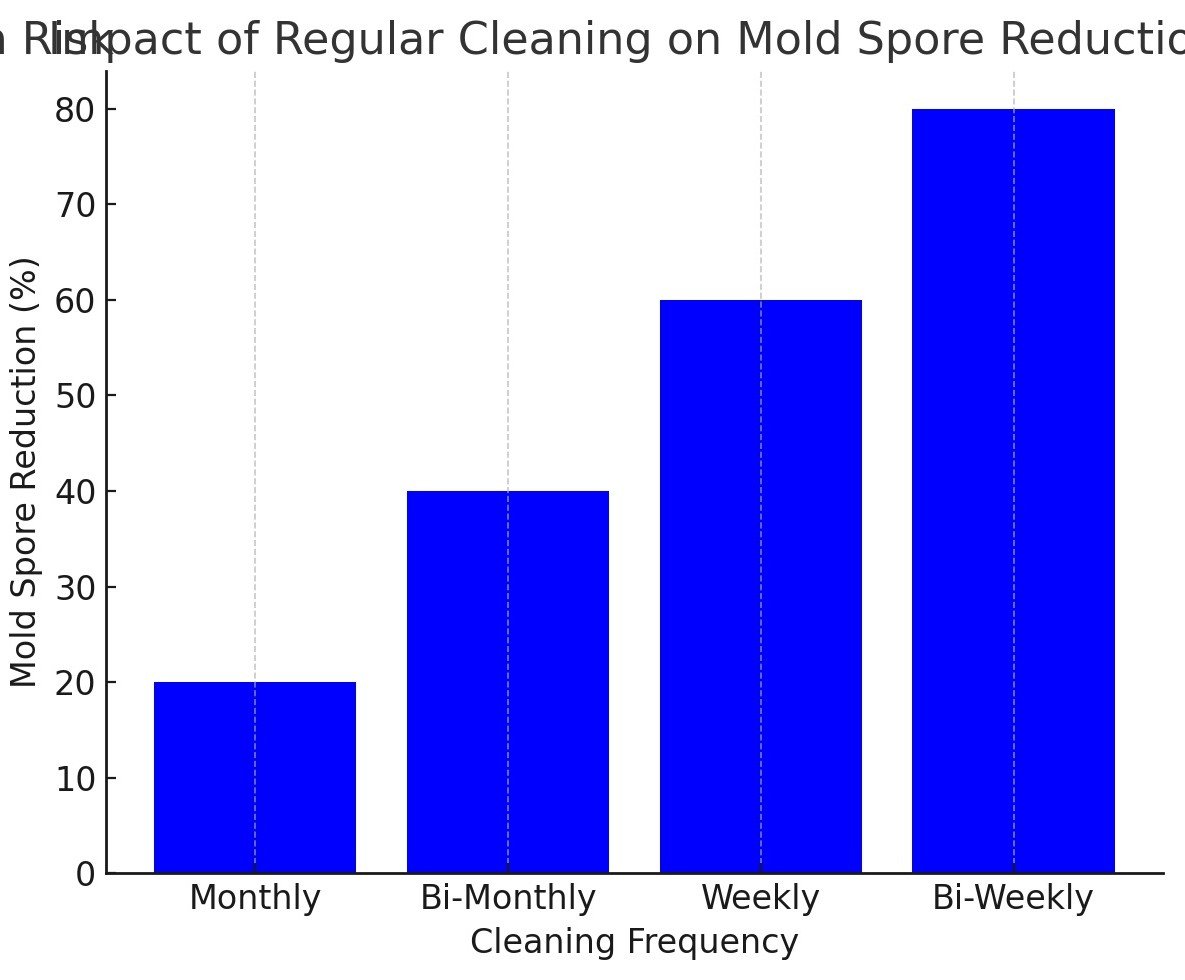
Caption for Potential Graph: “Impact of Regular Cleaning on Mold Spore Reduction in Clothing Storage Areas
Implementing a regular cleaning schedule not only helps in keeping mold at bay but also ensures the longevity of your clothing. It’s crucial to adapt the frequency and methods of cleaning to your home’s specific needs, especially in areas prone to high humidity or poor ventilation. Keeping your living spaces and storage areas clean and dry is your first line of defense against the threat of mold on clothes.
Trick 10: Professional Mold Remediation

There are circumstances where DIY methods might not suffice in combating mold on clothes, signaling the need to call in professionals like Bio On for mold remediation. Understanding when and why to seek professional help is crucial in effectively managing mold issues.
When to Contact a Professional:
- Extensive Mold Growth: If mold has affected large areas or multiple items, indicating a widespread problem.
- Recurring Mold: If mold returns despite repeated cleaning, suggesting an underlying issue beyond surface growth.
- Health Concerns: If anyone in your household is experiencing health issues potentially related to mold exposure, such as allergies or respiratory problems.
Advantages of Professional Remediation:
- Expertise and Experience: Professionals have the knowledge to identify the root cause of mold growth and implement effective solutions.
- Advanced Techniques and Equipment: They use commercial-grade products and equipment that are more effective than household cleaning tools.
- Time and Efficiency: A professional team can complete the remediation process quickly and thoroughly.
- Preventative Measures: Beyond removing current mold, professionals can offer advice and solutions to prevent future growth.
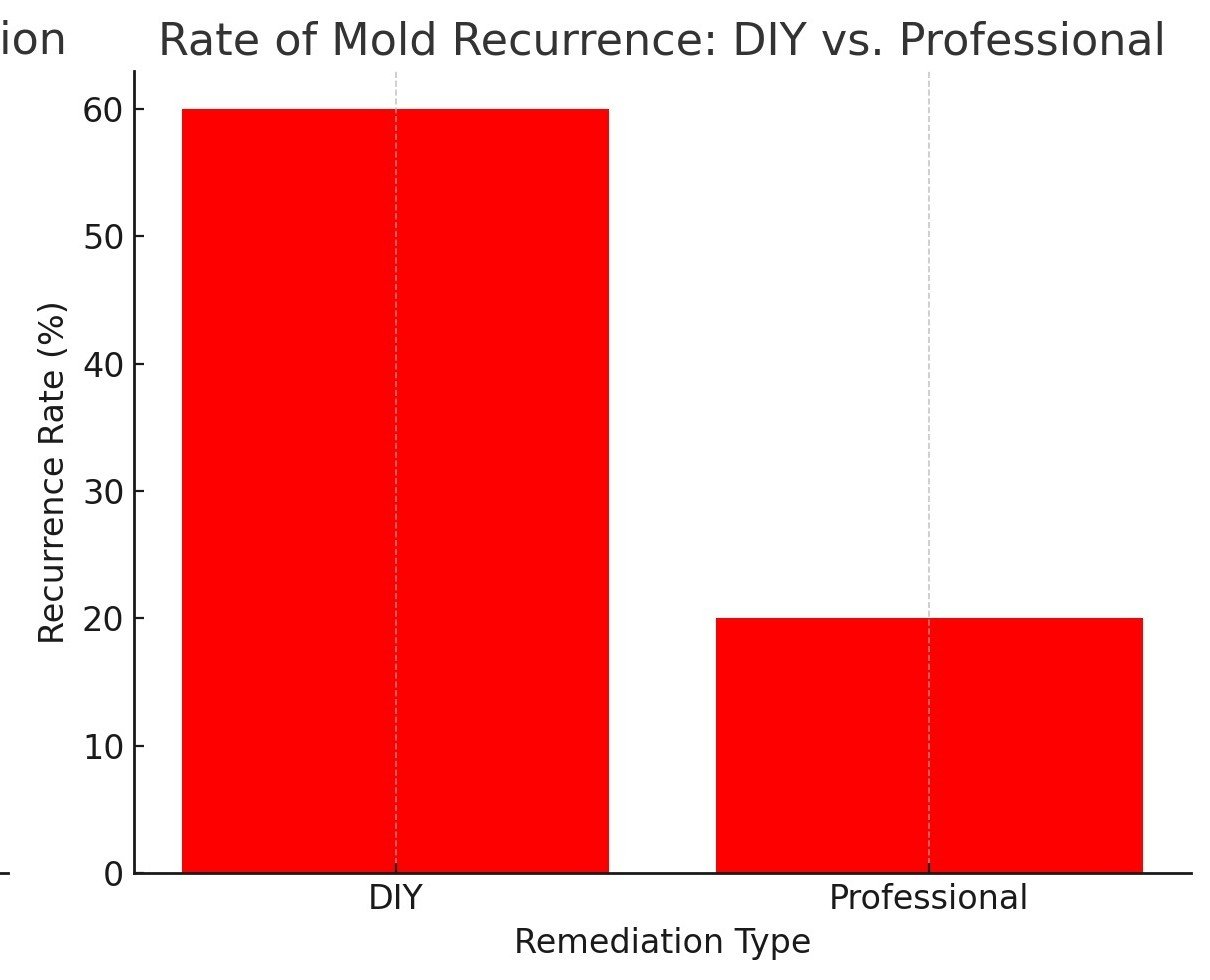
Seeking professional mold remediation services like those offered by Bio On can ensure that mold issues are resolved efficiently and effectively, protecting your home and health. Professionals not only address the visible signs of mold but also tackle the environmental conditions that foster its growth, offering a long-term solution rather than a temporary fix.
Why Bio On is Your Go-To Mold on Clothes Solution
Before we conclude, let’s talk about why Bio On is your best ally in the battle against mold on clothes. Our expertise in Mold Remediation and Deep Cleaning services means we’re equipped to handle even the most stubborn mold problems. Whether it’s a cherished garment or your entire wardrobe at risk, our team is here to provide the ultimate protection against mold. We understand the importance of a mold-free home for your health and comfort. Don’t hesitate to hit the 24/7 consultation button on the bottom right to chat with our Bio On team for free advice and solutions tailored just for you.
Conclusion
Wrapping up, these 10 tricks are your armor against the relentless foe that is mold. Armed with natural solutions and the backing of professional services from Bio On, you’re now equipped to tackle any mold challenge that comes your way. Remember, preventing mold on clothes is not just about cleanliness; it’s about creating a healthier environment for you and your loved ones. For any mold-related issues beyond your control, we’re just a click away. Consult with us anytime, and let’s keep your clothes and home mold-free together.








